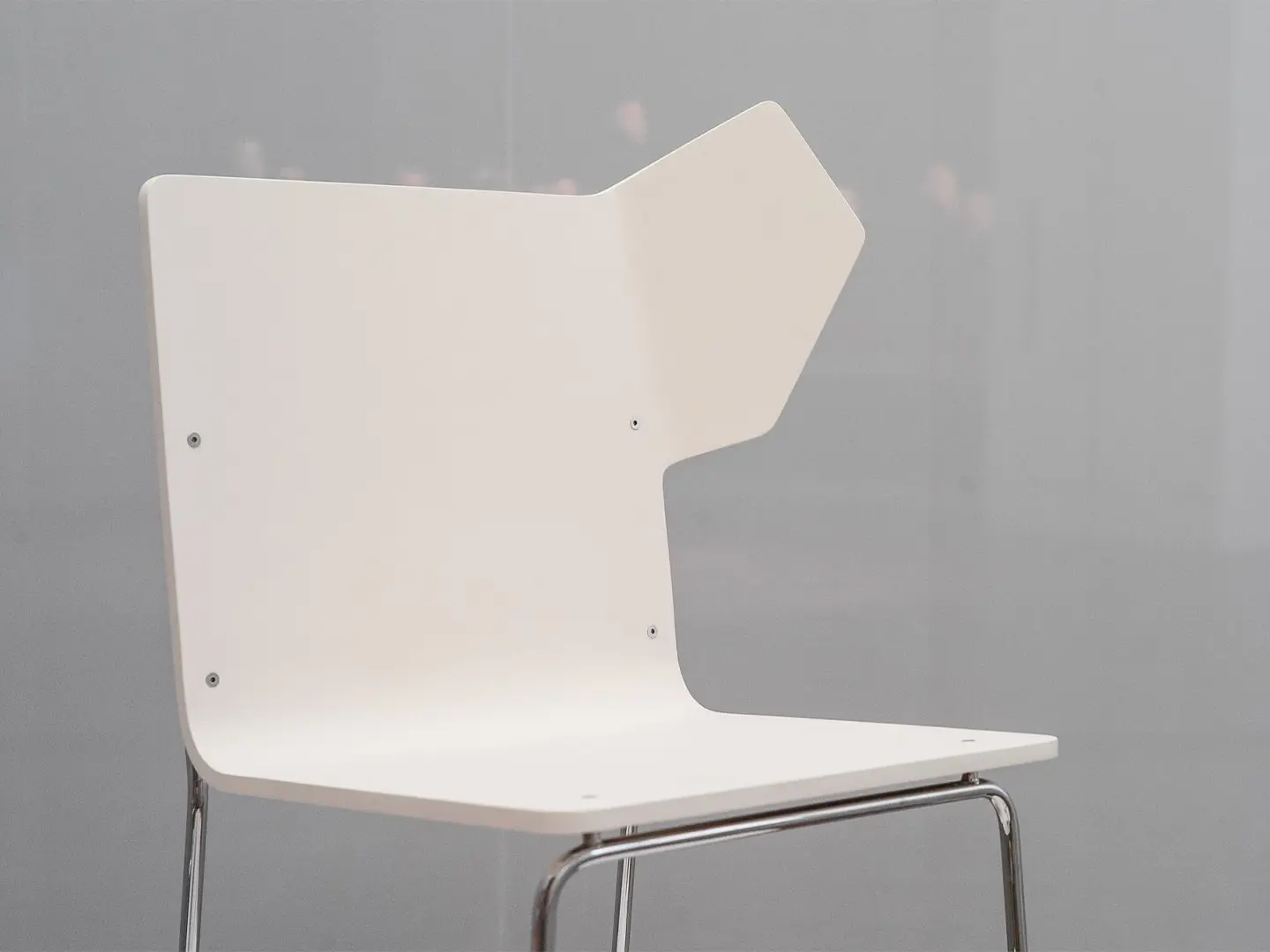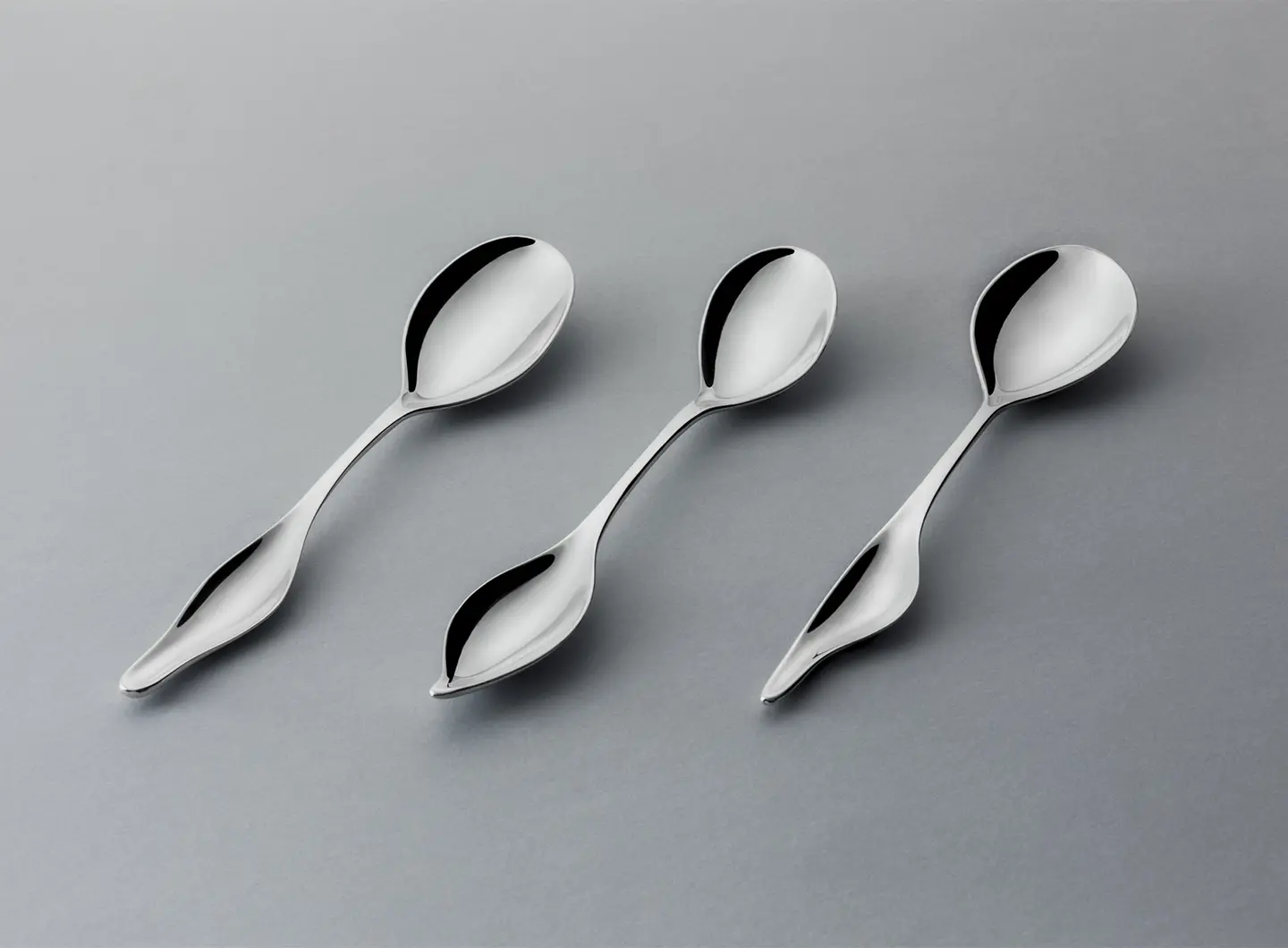In partnership with MiCodmc, a selection of establishments ripe for discovery during the 63rd edition of the Salone del Mobile.Milano, from 8th to 13th April
How to use Artificial Intelligence in the design industry

The chAIr project – generating a design classic, design Philipp Schmitt & Steffen Weiss, ph. courtesy
What can AI do for the creative sector? We have brought together a series of case studies showing how this technology is being used today
A and I: two letters that set side by side stand for a very powerful tool. Depending on the viewpoint, it can mean a great revolution, or fearsome technology fated to steal work from future creatives. Regardless of personal considerations, there is no doubt that artificial intelligence is an extraordinary tool and bound to change many of the forms of work we have long been accustomed to. The fields where artificial intelligence can be used are endless, and in many of them its role is more or less comprehensible. But what can AI do for the creative sector? How can it be used in the design world? What uses and innovations await professionals and design buffs?
We tried to answer these questions by mapping in broad terms the state of the art of the most talked about technology of the year. But before getting to the heart of the discussion, it is right to start by understanding what we are talking about and trying to give a definition of artificial intelligence. What better way than to ask an artificial intelligence itself to tell us what artificial intelligence is? To do this, we questioned the algorithm behind one of the most famous chatbots based on artificial intelligence. Here’s the answer that ChatGPT provided: “AI is a field of computer science that creates systems and programs capable of performing tasks usually requiring human intelligence. The goal of artificial intelligence is to develop algorithms and models that enable computers to learn, reason, solve problems and make decisions independently, without being explicitly programmed for each specific action.” So the basis is algorithms capable of assimilating data, reprocessing them in a complex way and providing the results. That said, it's time to understand how artificial intelligence can be used in the world of creativity and specifically design.

Kartell, A.I. Console, design Philippe Starck and AI, ph. Andrea Mariani
If we start from the idea of artificial intelligence as a tool, every self-respecting creative clearly knows that the process of imagination and conception can be long, complex and tortuous, a sequence of trial and error. Artificial intelligence, in this case generative, can be used to create new content from a data set entered by a human. From the most famous ChatGPT used above, which makes it possible to create any type of text content, there are many applications currently available that can help designers imagine new products.
If we pass from text to the creation of images, it is difficult not to mention the most famous Midjourney or again Stable Diffusion, a powerful opensource algorithm capable of creating from a prompt, i.e. a request from a human intelligence.
If we pass from theory to practice, long before all it became a buzzword, Kartell used artificial intelligence to create products in which designers, in the specific case Philippe Starck, and artificial intelligence worked together in the search for pure, crisp forms. The result was embodied in the A.I. collection, which saw the addition of a console to the 2023 edition of the Salone del Mobile.

Spawns, design oio studio and AI, ph. courtesy
A generative algorithm was used by oio studio for their Spawns project. Oio was founded by Simone Rebaudengo and Matteo Loglio, with a European branch divided between London, Belgrade and Amsterdam. It has long been using artificial intelligence in its projects in the attempt to understand, digest and use it, stressing its potential as well as possible problems. Spawns is the project in which oio used a generative algorithm to imagine a near future when new design products would be drafted by a machine. Quoting Ernesto Nathan Rogers’ famous 1952 slogan “from the spoon to city”, oio's creatives have adopted a new process called “artisanal intelligence”. They fed an artificial intelligence a selection of images of spoons, which were reworked and coded by the latter to produce original models. These were then selected and developed in collaboration with giosampietro into 3D models that were in turn passed on to the artisans of Greggio Argenterie. The result was a limited edition collection of three models of silverplate spoons - oio Store.

The chAIr project – generating a design classic, design Philipp Schmitt & Steffen Weiss, ph. courtesy
Philipp Schmitt & Steffen Weiss also look at chairs and the use of artificial intelligence in their program The chAIr project – generating a design classic. The purpose was to collaborate with artificial intelligence to create a classic seat. The designers got a generative neural network up to speed by feeding it iconic images of seating from the twentieth century. The designs the machine produced were used, reversing the roles, by a human designer, who tried to translate the machine design into something humans would recognize as a chair. In this way the experiment highlighted how human-artificial collaborative intelligence can give rise to interesting experiments.
And if so far we have recounted some examples of the present, the future with regard to artificial intelligence is a big question mark, with implications truly beyond our ken. Due to its ability to potentially replace purely human activities, such as creativity or decision-making, artificial intelligence could go beyond being a simple tool and produce unclear effects that some see as apocalyptic.
In the spirit of scientific positivism, however, artificial intelligence is a tool and as such can be harmless and highly useful if properly used. To the future the answer.


 Stories
Stories














